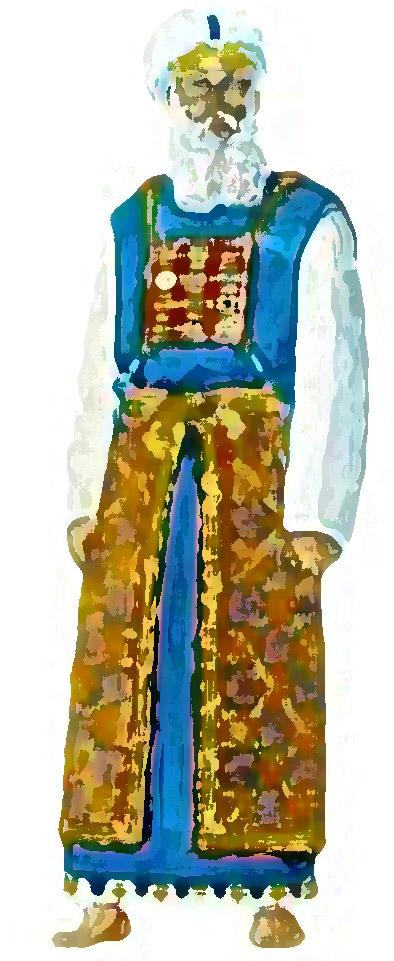Tetsaveh is about how the High Priest Aaron and his sons were to be dressed when they went into the Dwelling for the Ten Commandments (which was what last week’s Torah portion was about.)
Here’s what they were to wear:
- A chest piece — a little like the chest protector an umpire wears, only this one was
- studded with gold
- had 12 jewels on it, representing the twelve tribes
- had an Urim and a Thumim (mystical things used in making predictions)
- A many colored ephod (kind of an apron)
- A blue robe with bells on it that went under the ephod
- A fringed tunic, also with bells.
- Knee length pants
- A forehead plate of pure gold with God’s name on it
- A hat or turban
- An embroidered sash
It’s interesting that this description of the elaborate clothing that Aaron wore gets read right around Purim. Because what do we do at Purim? We dress up! As Rabbi Elisa Koppel has said,
Sometimes, what we are wearing changes who we have the potential to be. It affects how we carry ourselves, what we think of ourselves, and even our promise.
This is true of little kids, who dress up in Superman capes and “become” Superman. But it’s true of grownups too. You’ll feel pretty fancy dressed up in a top hat and tails. From the other point of view, people might look down on you if you’re dressed in a smelly old sweater with holes in it.
As Rabbi Koppel says: “Maybe the Priests’ vestments were there as a way to remind them of the power of their work, and of its importance. To change themselves and their frame of mind, by putting on the outfit of their work.”

